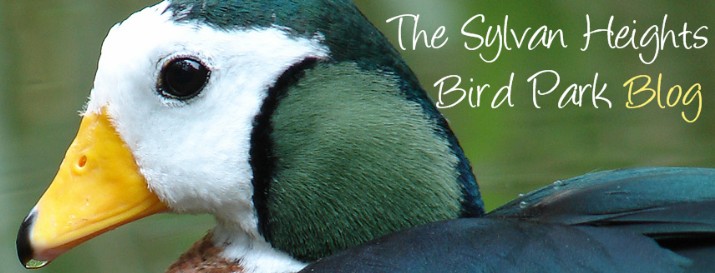by Sylvan Heights Staff
Falconry is the use of a bird of prey - such as a falcon -
to hunt with, and is arguably one of the oldest sports known to man. Earliest
records have it dated back to 2000 B.C in the Tigris-Euphrates river system.
Many people think of falconry as the sport of kings, but it wasn’t actually
introduced to Europe until about 350 A.D when Mongol tribes invaded Western
Europe. Falconry has remained much the same since its conception, with only a
few technological advances in the last twenty years changing the sport
slightly.
Here at Sylvan Heights we have four species of raptor, also
known as birds of prey. The term “raptor” comes from the Latin word rapere meaning to seize or plunder with
force. The word refers to the hunting style of hawks, eagles, and falcons, with
many species using their feet to grab their prey. Our collection of raptors is
financially supported through the generous donations of our sponsors, with three
of the species on public display. You can see our breeding pair of Eurasian
Eagle owls (Bubo bubo), that are considered
one of the most genetically important pairs in the country, on display across
from our picnic area. And a new pair of burrowing owls (Athene cunicularia) is now on display,
too. We have high hopes of future success with them.
We also have plans for a future bateleur eagle (Terathopius
ecaudatus) exhibit. Currently, our single male is part of only a handful of
bateleurs in the United States, with the last successful breeding almost
fifteen years ago. It is their precarious future in captivity that has us
interested in working with this species.
Sylvan is also home to a female red-tailed
hawk (Buteo
jamaicensis) named Cara. She is different than our other species of raptors
because she is used as a falconry bird. Our resident falconer trapped her in
October 2012 and has been training her ever since. Red-tails are a favorite
hawk in the sport because the species is found throughout the United States.
Young birds are trapped from the wild because their mortality rate is naturally
extremely high, with an estimated 1 in 10 reaching adulthood. With such a high
mortality, taking a young bird has no detrimental effect on the population. In
fact, many responsible falconers release their birds after several hunting
seasons so they can carry out their natural life cycles, and because these
birds have survived their first year and know how to hunt they tend to be very
successful after their release.
Cara is off exhibit, but some of our Sylvan Heights members
receive flight demonstrations for special occasions, getting to meet her and
her falconer up close and personal. But for those of you interested in meeting Cara
or learning more about the sport of falconry, Sylvan will be hosting Raptors Rule on April 20th,
an event sponsored by the North Carolina Science Festival. Come join us as
Sylvan Heights staff member and falconer, Dustin Foote, gives a talk about the
sport of falconry and raptors.


